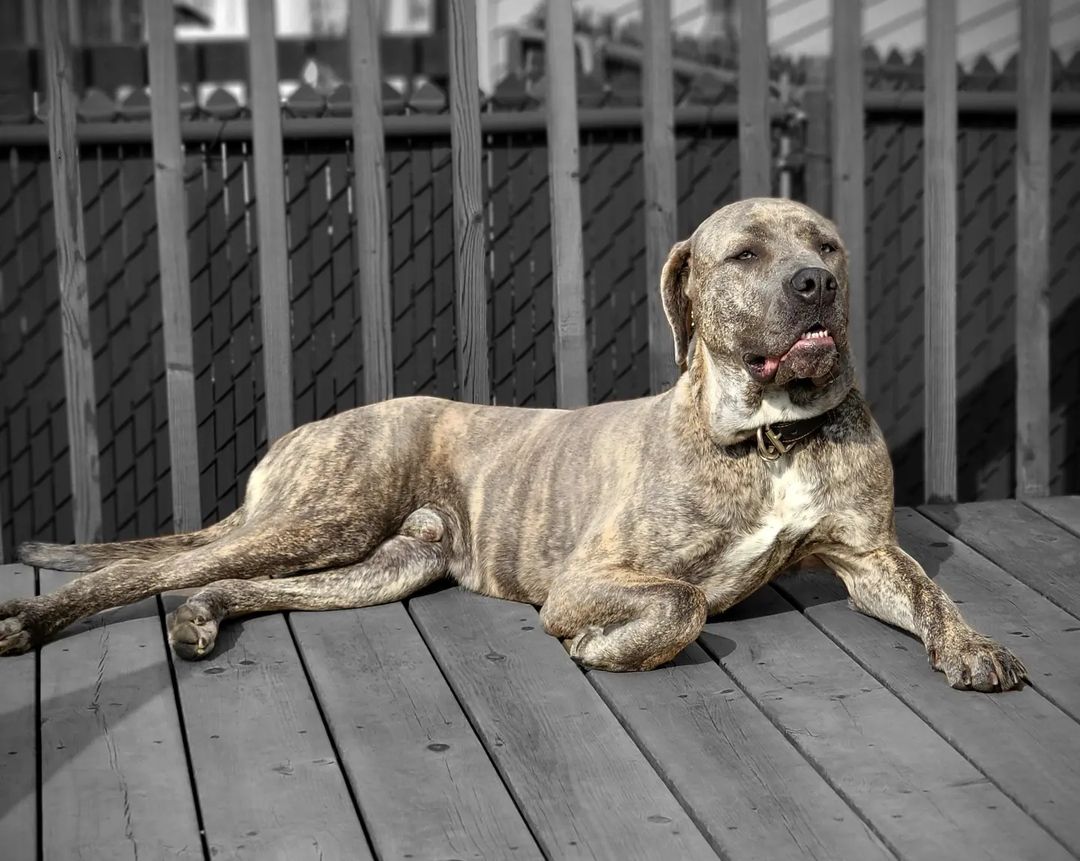Cane Corsos are fiercely loyal and protective dogs that are known for their strength and athleticism. Unfortunately, even the fittest of dogs can sometimes succumb to injuries and other physical issues that may lead to limping. If you notice that your Cane Corso is limping, it’s important to understand the potential causes and seek veterinary care as soon as possible. In this blog post, we’ll explore why your Cane Corso may be limping, when to call the vet, and how to go about diagnosing and treating your dog’s condition.
Table of Contents
1. Gradual Onset vs. Sudden Limping in Cane Corso Dog
Limping in cane corso dog can occur in two different ways: gradually over time or suddenly. Gradual onset limping often occurs due to chronic conditions that develop over time, such as arthritis or dysplasia. As these conditions worsen, your dog’s gait may change, and they may begin to show signs of limping.
Sudden limping, on the other hand, can occur due to a variety of issues such as injuries, sprains or strains, insect bites or stings, and even infections. It is important to note that any type of limping should be taken seriously and addressed promptly to ensure that it does not lead to further complications.
2. When to Call the Vet If Your Dog Is Limping
If you notice that your Cane Corso is limping, it’s important to monitor their behavior and schedule an appointment with your vet as soon as possible. There are several signs to look out for that may indicate a more serious condition that requires immediate attention. These signs include:
– Severe limping or refusal to put weight on the affected limb
– Swelling or tenderness around the affected area
– Changes in appetite or drinking habits
– Lethargy or depression
– Signs of discomfort, such as panting or pacing
It’s important to note that while some mild limping may resolve on its own, it’s best to err on the side of caution and seek veterinary care to rule out any underlying issues.
3. Common Causes of Limping in Cane Corso Dog
There are several potential causes of limping in dogs, ranging from minor injuries to chronic conditions. Some of the most common causes of limping in Cane Corsos include:
– Injuries: Dogs can injure themselves in a variety of ways, from running into objects to slipping on wet surfaces. Injuries can lead to limping, swelling, and tenderness around the affected area.
– Arthritis: Arthritis is a common condition in older dogs that can cause joint pain and stiffness, leading to limping and difficulty walking.
– Dysplasia: Hip and elbow dysplasia are genetic conditions that affect many large breeds, including Cane Corsos. These conditions cause abnormal joint development that can lead to limping and lameness.
– Infections: Bacterial and viral infections can cause inflammation and pain in the joints, leading to limping and other signs of discomfort.
– Cancer: Tumors and other types of cancer can cause pain and discomfort, leading to limping and other mobility issues.
These are just a few of the many potential causes of limping in dogs. Your vet will be able to help you determine the underlying cause of your Cane Corso’s limping and develop an appropriate treatment plan.
4. Diagnosing a Limping Dog
Diagnosing a limping dog can be challenging, as there are many potential underlying issues that could be causing the problem. Your vet will likely begin by performing a physical exam to look for any signs of injury or inflammation. They may also recommend imaging tests, such as X-rays or an MRI, to get a closer look at your dog’s joints and bones.
Blood work and other diagnostic tests may also be ordered to rule out any underlying infections or other health issues. Once a diagnosis has been made, your vet will work with you to develop a treatment plan that addresses the underlying cause of your Cane Corso’s limping.
5. Treating a Limping Dog
The treatment plan for a limping dog will depend on the underlying cause of the issue. For mild injuries or strains, rest and conservative care may be enough to resolve the problem over time. More serious injuries or conditions may require surgery, medication, or other types of intervention.
Arthritis and other chronic conditions may be treated with medication, physical therapy, and lifestyle changes to reduce your dog’s discomfort and improve their mobility. In some cases, surgery may be necessary to address joint issues and other underlying problems.
In all cases, it’s important to work closely with your vet to develop a treatment plan that meets your dog’s individual needs. With proper care and attention, even serious limping issues can be effectively managed to keep your Cane Corso healthy, active, and pain-free.
Conclusion
Limping in cane corso dog can be a frustrating and concerning issue for any pet owner. Understanding the potential causes of limping, when to seek veterinary care, and how to go about diagnosing and treating the problem is essential for ensuring that your Cane Corso remains happy and healthy. With proper care and attention, you can help your dog overcome any limping issues and enjoy a full and active life by your side.










